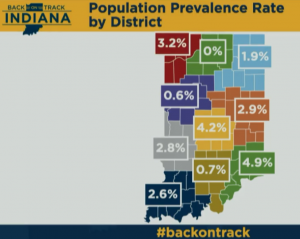 Statewide—Preliminary results from a scientific study aimed at measuring the spread of the novel coronavirus in Indiana show a general population prevalence of about 2.8 percent of the state’s population. As part of the first phase of the study, a collaboration of the Indiana State Department of Health and the Fairbanks School of Public Health, researchers tested more than 4,600 Hoosiers between April 25 and May 1 for viral infections and antibodies of SARS-CoV-2, the novel coronavirus that causes COVID-19.
Statewide—Preliminary results from a scientific study aimed at measuring the spread of the novel coronavirus in Indiana show a general population prevalence of about 2.8 percent of the state’s population. As part of the first phase of the study, a collaboration of the Indiana State Department of Health and the Fairbanks School of Public Health, researchers tested more than 4,600 Hoosiers between April 25 and May 1 for viral infections and antibodies of SARS-CoV-2, the novel coronavirus that causes COVID-19.
After analyzing these test results, IUPUI public health researchers determined that during the last week in April, 1.7 percent of participants tested positive for the novel coronavirus and an additional 1.1 percent tested positive for antibodies—bringing the estimated population prevalence of the virus in the state to 2.8 percent, or approximately 186,000 Hoosiers who were actively or previously infected as of May 1, Dr. Nir Menachemi said.
As of the same date, the state’s testing showed about 17,000 cumulative cases—not including deaths—suggesting that only about one out of every 11 true infections were identified by tests focused on symptomatic or high-risk people. Dr. Menachemi also said the research team also found that almost 45 percent of people who tested positive for active viral infection reported no symptoms at all.
Additionally, the study found some differences across the state’s 10 Public Health Preparedness Districts. District 9, Southeastern Indiana, which experienced an early facility-based outbreak, was observed to have the highest prevalence of the virus in the general population.



